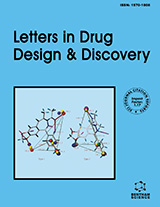Abstract
It is not unusual for models developed to predict Absorption, Distribution, Metabolism, Elimination, and Toxicity (ADMET) as well as other endpoints to be nothing more than a black box, supplying only a numerical or categorical value by which users are expected to assess the goodness of a query compound. This type of result is, however, of little use in the overarching goal of developing better and safer drug compounds, that is, providing guidance toward improving the characteristics of the query or formulating chemical hypotheses that can be evaluated through synthetic efforts. As a result, the level of acceptance of predictions by users outside the computational chemistry and molecular modeling groups tends to be very low. In this review, I address three primary domains in which model presentation can be improved, specifically, establishing confidence in the prediction, data interrogation, and model interpretability. It has been my experience that even small efforts in these areas result in a much greater return with respect to acceptance, good faith, and usage from users regardless of the users role within the drug discovery process.
Current Computer-Aided Drug Design
Title: Beyond the Model
Volume: 5 Issue: 2
Author(s): Robert K. DeLisle
Affiliation:
Abstract: It is not unusual for models developed to predict Absorption, Distribution, Metabolism, Elimination, and Toxicity (ADMET) as well as other endpoints to be nothing more than a black box, supplying only a numerical or categorical value by which users are expected to assess the goodness of a query compound. This type of result is, however, of little use in the overarching goal of developing better and safer drug compounds, that is, providing guidance toward improving the characteristics of the query or formulating chemical hypotheses that can be evaluated through synthetic efforts. As a result, the level of acceptance of predictions by users outside the computational chemistry and molecular modeling groups tends to be very low. In this review, I address three primary domains in which model presentation can be improved, specifically, establishing confidence in the prediction, data interrogation, and model interpretability. It has been my experience that even small efforts in these areas result in a much greater return with respect to acceptance, good faith, and usage from users regardless of the users role within the drug discovery process.
Export Options
About this article
Cite this article as:
DeLisle K. Robert, Beyond the Model, Current Computer-Aided Drug Design 2009; 5 (2) . https://dx.doi.org/10.2174/157340909788451900
| DOI https://dx.doi.org/10.2174/157340909788451900 |
Print ISSN 1573-4099 |
| Publisher Name Bentham Science Publisher |
Online ISSN 1875-6697 |
 3
3
- Author Guidelines
- Bentham Author Support Services (BASS)
- Graphical Abstracts
- Fabricating and Stating False Information
- Research Misconduct
- Post Publication Discussions and Corrections
- Publishing Ethics and Rectitude
- Increase Visibility of Your Article
- Archiving Policies
- Peer Review Workflow
- Order Your Article Before Print
- Promote Your Article
- Manuscript Transfer Facility
- Editorial Policies
- Allegations from Whistleblowers


























